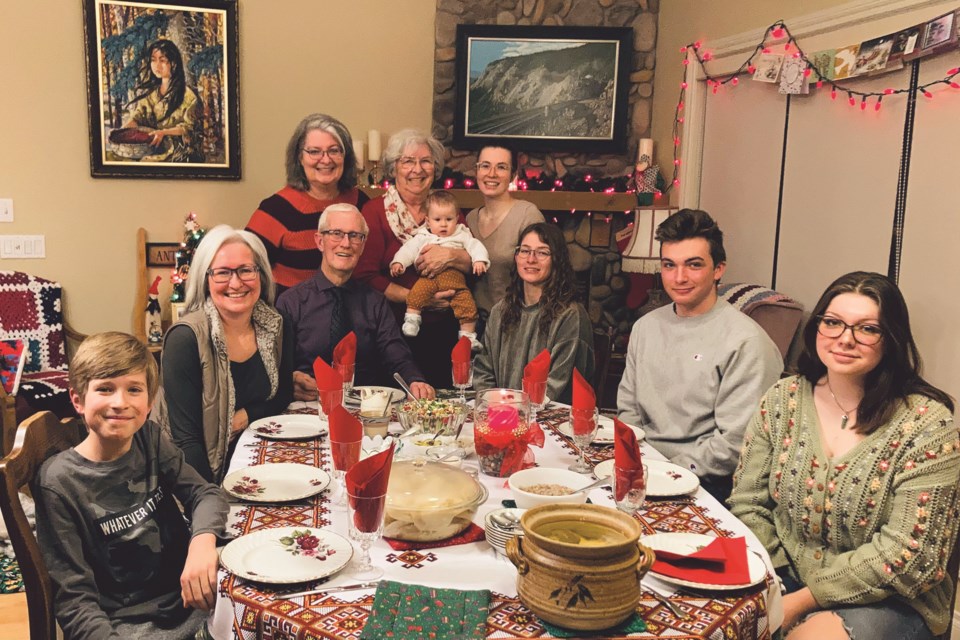Keeping traditions alive is important for Anne Wahlund, an Okotokian of nearly two decades and a first-generation Ukrainian Canadian.
The morning and afternoon of Jan. 6 was busy with preparations as she readied herself to host a traditional Christmas Eve feast. The Thursday-evening meal was particularly unique as four generations of her family would join around the table to eat, drink and celebrate, she said.
“We do celebrate a bit of it every year, but this year was a special year for us to do this,” said Wahlund, who owns Countryside Picture Framing with her husband, with whom she has two daughters and five grandchildren.
She was especially excited to be joined by her granddaughter and great-granddaughter, who made the trip from Ohio for the holidays.
Ukrainian Orthodox practices follow the Julian calendar which marks Jan. 6 on the Gregorian calendar as Christmas Eve.
Christmas celebrations end on Jan. 19, the date of Epiphany or Yordan in Ukrainian, in accordance with the Julian calendar.
A traditional Ukrainian Christmas Eve celebration involves a dinner with 12 meatless dishes, representing Jesus’ 12 apostles. There is some variation in dishes based on location, but what is served is generally consistent.
On Wahlund’s table was homemade cabbage rolls and perogies, nachinka (cornmeal stuffing casserole), boiled wheat, fish and homegrown, fried banana potatoes (similar to fingerling potatoes) among other dishes.
Other common additions to the meal may include red borscht, dried or pickled mushrooms and dishes with poppy seeds.
“It’s like preparing for a feast,” she said of planning for the festivities.
Growing up on a farm near Evansburg, in west central Alberta, Wahlund has practised these traditions her whole life. She recalled fondly what the holiday looked like when she was a child, explaining that traditions around gift-giving were a bit different than they are now.
“Our presents were treats from the store, like candies and oranges and stuff like that, that was our Christmas,” she said. “We really never had presents for many years until we went to work in a commercial place and could afford to bring presents home.
"It was the food; the food was the big thing that night.”
The meal begins when the first star in the sky appears, Wahlund said.
When she was a child, this was often signified by her father placing a sheaf of wheat in the corner of the room, as he was the head of the household. She explained this commemorated the presence of God being in charge of all things and sacrificing his son.
Wahlund said traditional celebrations are few and far between, but she is committed and excited to preserve her heritage and pass it on to the younger members of her family.
“It’s a dying thing – there’s very few people that carry on that tradition,” she said. “But it is something that we like to keep alive in our family, just to know where we came from.”




